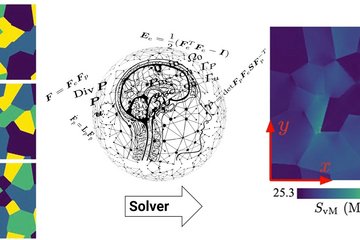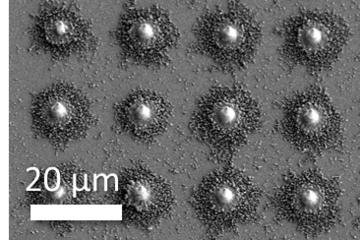Integrated workflows for materials and data science
Integrated Computational Materials Engineering (ICME) is one of the emerging hot topics in Computational Materials Simulation during the last years. It aims at the integration of simulation tools at different length scales and along the processing chain to predict and optimize final component properties.
The realization of ICME concepts necessitates a workflow system, which on the one hand allows a flexible combination of different simulation tools and on the other hand enables the data exchange between these different tools. In addition, the workflow system should follow the FAIR (Findable, Accessible, Interoperable, and Re-usable) principle for sustainable materials development and offer a generic user interface to handle the different simulation tools.
Pyiron developed by the CM department is such a workflow platform. Originally designed for the integrated development and management of workflows on the atomistic scale, pyiron has been systematically extended during the last years to serve as a general workflow platform. In this process pyiron has been modularized. Besides the core module (pyiron_base) there exist three additional modules. pyiron_atomistic offers the original functionality on the atomistic scale; pyiron_continuum integrates continuum scale simulation tools like e.g. DAMASK developed in the MA department; pyiron_experimental finally allows handling experimental data. The last module, which currently focuses on (scanning) transmission electron microscopy ((S)TEM) data, extends the application of ideas originally developed in computational materials simulation to experimental data and thus allows the creation of mixed experimental and simulation workflows following the FAIR principle.
In the early times of ICME coupling of different simulation tools was usually achieved on a one-to-one basis. This means the output of program 1 was converted to serve as input for program 2. One of the goals of the Federal Ministry of Education and Research (BMBF) initiative ‘MaterialDigital’ is to overcome this direct coupling using ontology-based concepts. Here ontologies serve as an abstraction layer to define relations between data and concepts, which can be exploited for workflows and program interfaces. Such abstraction allows an exchange of different simulation tools that serve for a given workflow the same purpose. In this way workflows can be defined independently of the underlying simulation tools. Following a BMBF call in the framework of ‘MaterialDigital’, several academic projects have been initiated to define such workflows. The MPIE participates in the project ‘StahlDigital´ together with the Fraunhofer Institute for Mechanics of Materials in Freiburg and the Institute for Applied Informatics (InfAI) at the University of Leipzig. The aim of ‘StahlDigital´ is to define different workflows along the production chain and for the usage of steel sheets. These workflows will be based on ontologies, which describe both the material (two different steels) and the process chain (from hot rolling to crash performance) (Fig. 1).
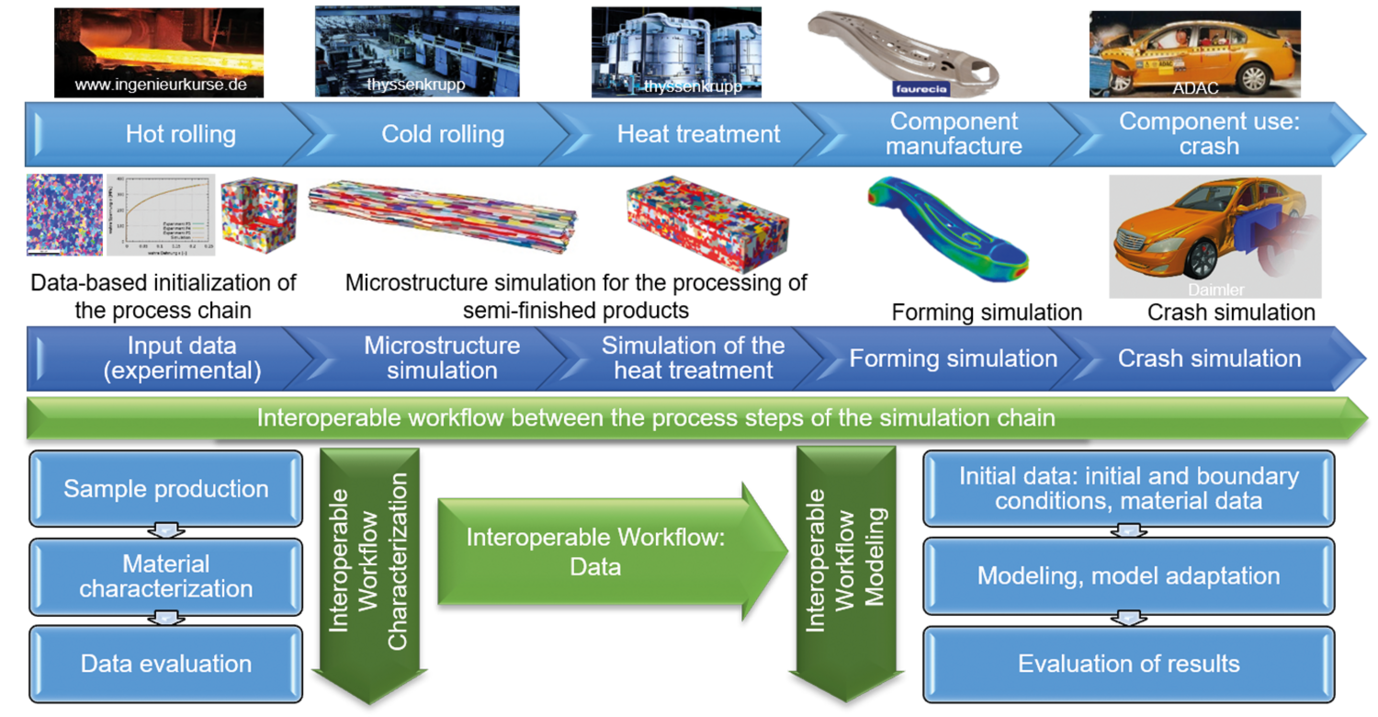
Two different pre-existing workflow platforms will be extended for this purpose, namely SymPhoNy [3] developed by the Fraunhofer IWM and pyiron developed by the MPIE (Fig. 2). While SymPhoNy already allows the usage of ontologies for the workflow description, pyiron is currently extended accordingly.
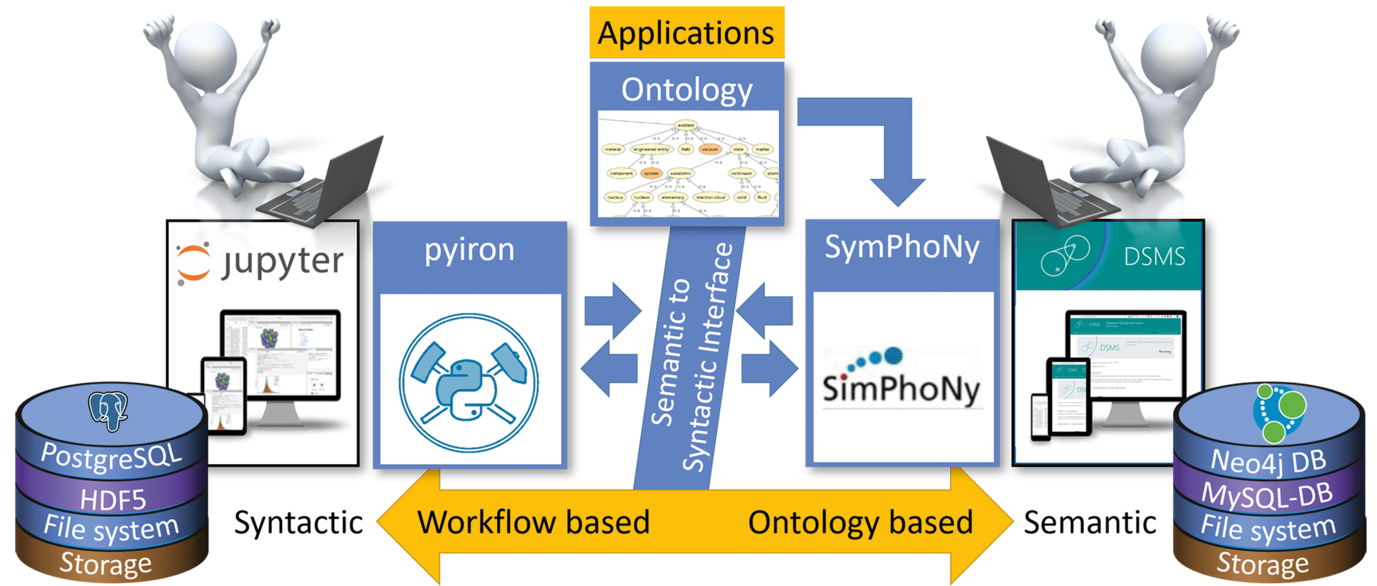
In the following, we showcase two prototypical workflows as they can be easily defined and executed using pyiron:
- A simulation workflow combining atomic scale simulation with continuum scale simulation.
- A data-mining workflow evaluating simulation results.
pyiron workflows are developed as Jupyter notebooks [4], which ensures full reproducibility. In addition, on top of the pyiron functionality any Python library can be easily included to perform special tasks.
Polycrystal elastic properties
Full field DAMASK simulations are well suited for the numerical homogenization of single crystal properties. However, often these single crystal properties are not known a priori. Here we are interested in the elastic properties of aluminium with different additions of magnesium. While the elastic constants of the pure materials are readily available in the literature, this is not true for the alloys. However, good interatomic potentials are available for the Al-Mg system. So, we can perform molecular dynamics simulations to determine the single crystal elastic constants. These are then passed into DAMASK, which is used to probe the elastic behaviour of a polycrystal under different loading conditions.
The full workflow consists of the following steps:
- Minimize the structure for a pure Al cubic cell
- Create special quasirandom structures (SQS) for different Mg concentrations
- Select the interatomic potential
- Run LAMMPS [5] simulations to determine elastic constants for each Mg concentration
- Fit elastic constants as function of Mg concentrations (Fig. 3)
- Create polycrystal volume element for DAMASK
- Define loadcases for DAMASK
- Inject elastic constants into DAMASK material file
- Run DAMASK simulations
- Determine homogenized elastic constants
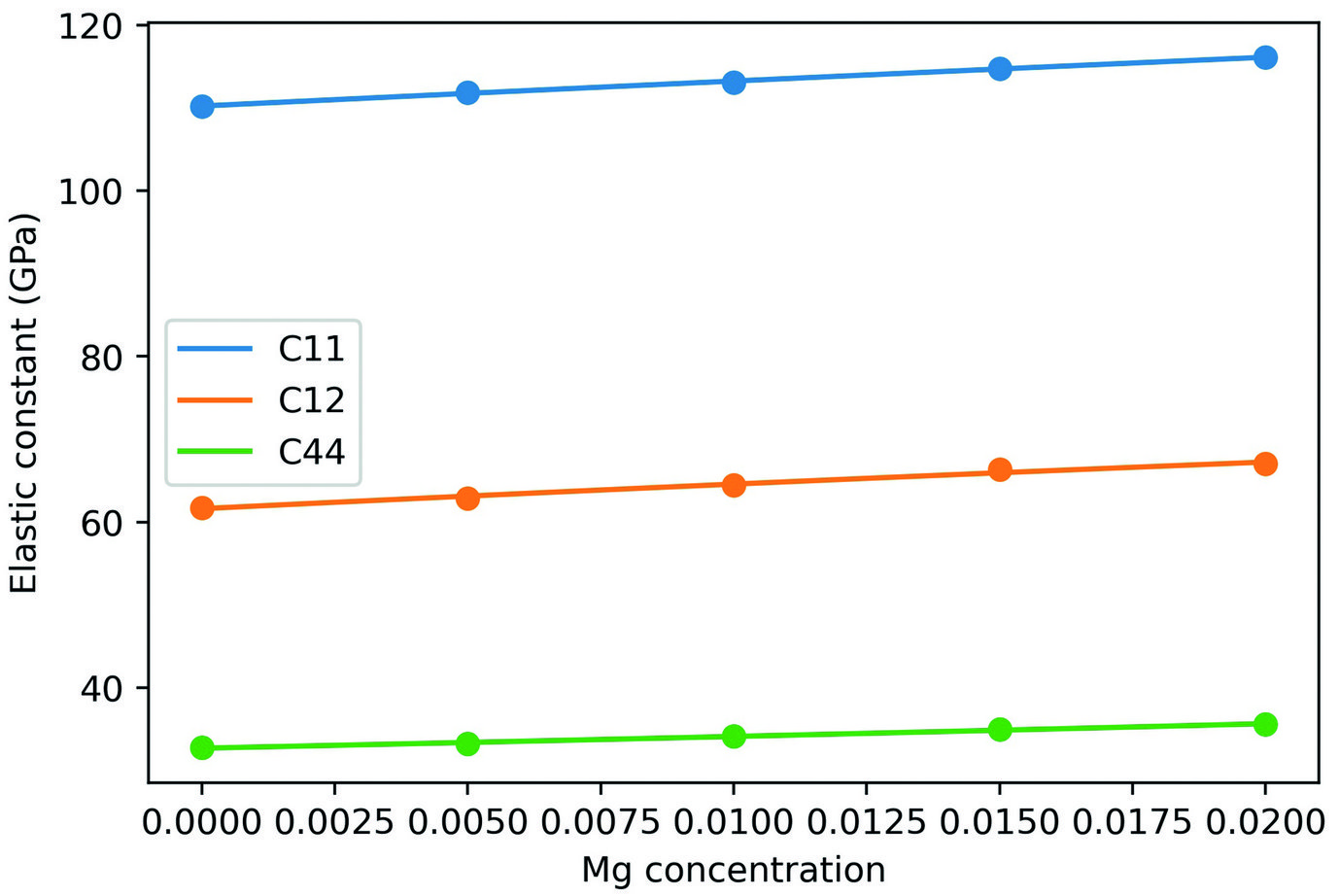
Assessment of empirical potentials for fcc-Al
The idea behind this workflow is to compare various empirical potentials with respect to their performance for ground state properties of fcc-Al. The workflow consists of the following steps:
- Get the list of available LAMMPS potentials
- Create a Murnaghan job for each potential
- Collect results in a table (Tab. 1)

While both workflows seem to be not very complex, they potentially need to run a huge number of individual simulation jobs. In this case pyiron takes full care of distributing the individual jobs to computing nodes, collecting the results, and at the same time record important meta data about the jobs in a SQL data base.
In summary, workflow management platforms like pyiron allow easy definition and execution of complex simulation projects following the FAIR principle. The connection to ontologies will make them even more flexible and easy to use.
References
- Janssen, J.; Surendralal, S.; Lysogorskiy, Y.; Todorova, M.; Hickel, T.; Drautz, R.; Neugebauer, J.: Comput. Mater. Sci. 163 (2019) 24.
- Roters, F.; Diehl, M.; Shanthraj, P.; Eisenlohr, P.; Reuber, C.; Wong, S.L.; Maiti, T.; Ebrahimi, A.; Hochrainer, T.; Fabritius, H.-O.; Nikolov, S.; Friák, M.; Fujitai, N.; Grilli, N.; Janssens, K.G.F.; Jia, N.; Kok, P.J.J.; Ma, D.; Meier, F.; Werner, E.; Stricker, M.; Weygand, D.; Raabe, D.: Comput. Mater. Sci. 158 (2019) 420.
- https://www.simphony-project.eu/
- https://jupyter.org/
- Thompson, A. P.; Aktulga, H. M.; Berger, R.; Bolintineanu, D. S.; Brown, W. M.; Crozier, P. S.; in 't Veld, P. J.; Kohlmeyer, A.; Moore, S. G.; Nguyen, T. D.; Shan, V.; Stevens, M. J.; Tranchida,










